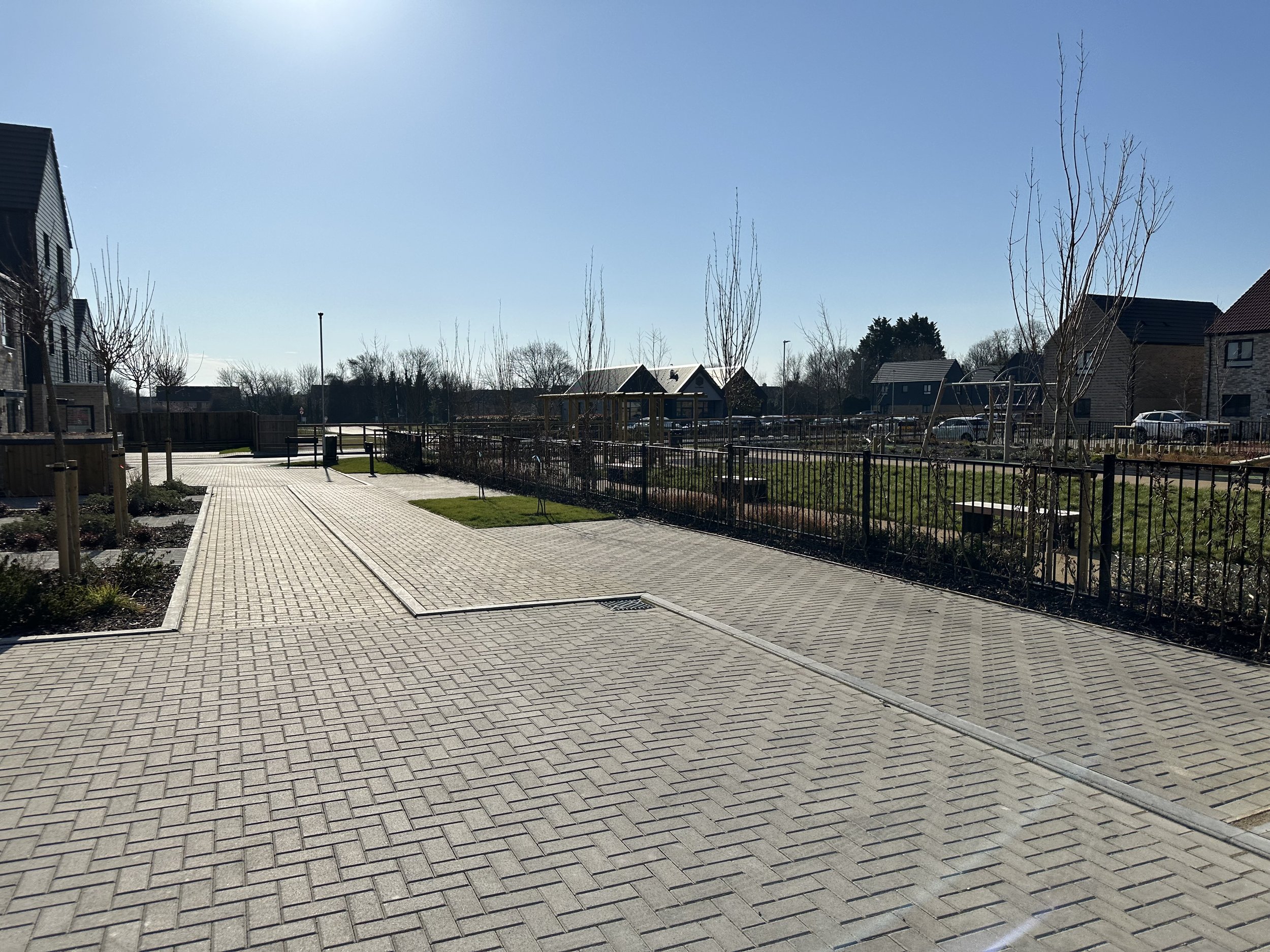Brigettines in Cherry Hinton - The Order of the Most Holy Saviour - Uphall Manor and Syon Abbey
In 1406, Henry FitzHugh visited Vadstena Abbey in Sweden, the founding house of the Brigettine Order (Order of the Most Holy Saviour), established by Saint Bridget of Sweden. The Brigettines were distinctive for their double monasteries, housing men and women in separate cloisters within the same community. The order had gained popularity and was beginning to spread across Europe.
FitzHugh, a prominent landowner and Lord of Ravensworth, introduced the Brigettines to England. He offered his manor house at Uphall in Cherry Hinton, near Cambridge, as a base for the order. Uphall Manor was one of four medieval manors in Cherry Hinton - alongside Mallets Manor, which perhaps stood opposite Uphall as a smaller satellite manor. Rectory Manor and Netherhall Manors both lay in the southern end of Cherry Hinton at Mill End. Of these, only Uphall Manor likely survives today as a heavily altered timber-framed house on Church End Road.
Despite FitzHugh’s offer, no monastery - that we know of - was ever built in Cherry Hinton. Instead, the first Brigettine monastery in England, Syon Abbey, was founded by Henry V in 1415 at Isleworth in Middlesex. Although Syon Abbey became the main Brigettine house in England, the significance for Cherry Hinton lies in the fact that the Brigettines first arrived here and stayed at Uphall Manor.
It remains a mystery what they did during their time there -whether they began construction of a monastery and then abandoned it in favour of the site in Isleworth, how they integrated with the local community during their stay here and how much they were involved with the founding of the new Syon Abbey site – did they travel back and forth etc.
Further research is needed to uncover more details about this brief but intriguing chapter in Cherry Hinton’s history. For this end I have attached a PDF below of my research notes and possible records to be looked at, should anyone like to take up this challenge and in case they are of any use.
For a couple of years now I have been corresponding with a lovely lady called Joy Hanson who is very interested in this subject. She shared that she had worked in the cloister garden at Syon Abbey’s last resting place Rattery in Devon 1986-90. She told me that they still use the same Syon Breviary as at Cherry Hinton then Isleworth in 1415 now in English.
Joy has shared some interesting information, and we’ve had some enlightening chats over the last couple of years. Joy shared this brilliant Syon Timeline, produced by Adrain Wardle, which you can view by clicking the link below:
https://syonbreviary.co.uk/introduction/syon-timeline-display
It was intended that Joy was to come and visit Cherry Hinton to see the site of Uphall and other points of interest, but due to some poor health recently she has been unable to make the visit. I made a video for her instead so that she could see the sites and share it with her Brigettine sisters and brethren. I have placed it on my YouTube channel as the file is too large to send via email and may be of interest to others – either Cherry Hinton folk or anyone interested in the Brigettines. The video is at the top of this page.
Below are the pictures which were used in the video, in case you would like to see the stills.
(Images courtesy of the Cambridgeshire Collection).
I have collected various bits and pieces relating to the Brigettines and Syon Abbey over the years, below are some of the items that I have:
Brigettine Square in Cherry Hinton
In 2021, I was invited to produce a history document for the area covering the new development at the north of Cherry Hinton and south-west Teversham. The aim was to gather a collection of suitable names for the development’s streets and buildings - names that would reflect the site’s heritage, provide a sense of place, and help foster a strong community identity.
I created the document for this purpose, and as the development began to take shape, I was pleased to see that some of the names I had suggested were being used. Naming new developments can be challenging, as preferred names aren’t always approved. There are many hurdles to navigate, including regulations and naming conventions that must be followed.
The site as a whole was named Springstead - a reference to the spring at Church End, from which a stream flows toward Teversham. The name combines “spring” with “stead,” meaning a homestead by a spring. Springstead will develop its own character and community over time, but it also continues Cherry Hinton’s long tradition as a polyfocal village - a settlement made up of several smaller hamlets.
In the medieval period, Cherry Hinton consisted of at least three distinct settlements: Church End in the north, Mill End in the south, and a small hamlet called Fen End - though its precise location is unknown, it likely lay near fen or marshy ground. It was only with the arrival of drainage systems and the construction of the railway station - positioned between Church End and Mill End - that these formerly separate communities began to merge into the single village we know today.
I was thrilled to see that one road had been named after the Brigettines and even more excited to tell Joy, so that she could share this with her kin - Brigettine Square.
In addition to Brigettine Square one of the house designs has also been named after the Brigettines, which is fantastic news.
Brigettine Square, Springstead Village, Cambridge
What three Words Location: ///memo.above.gain


























